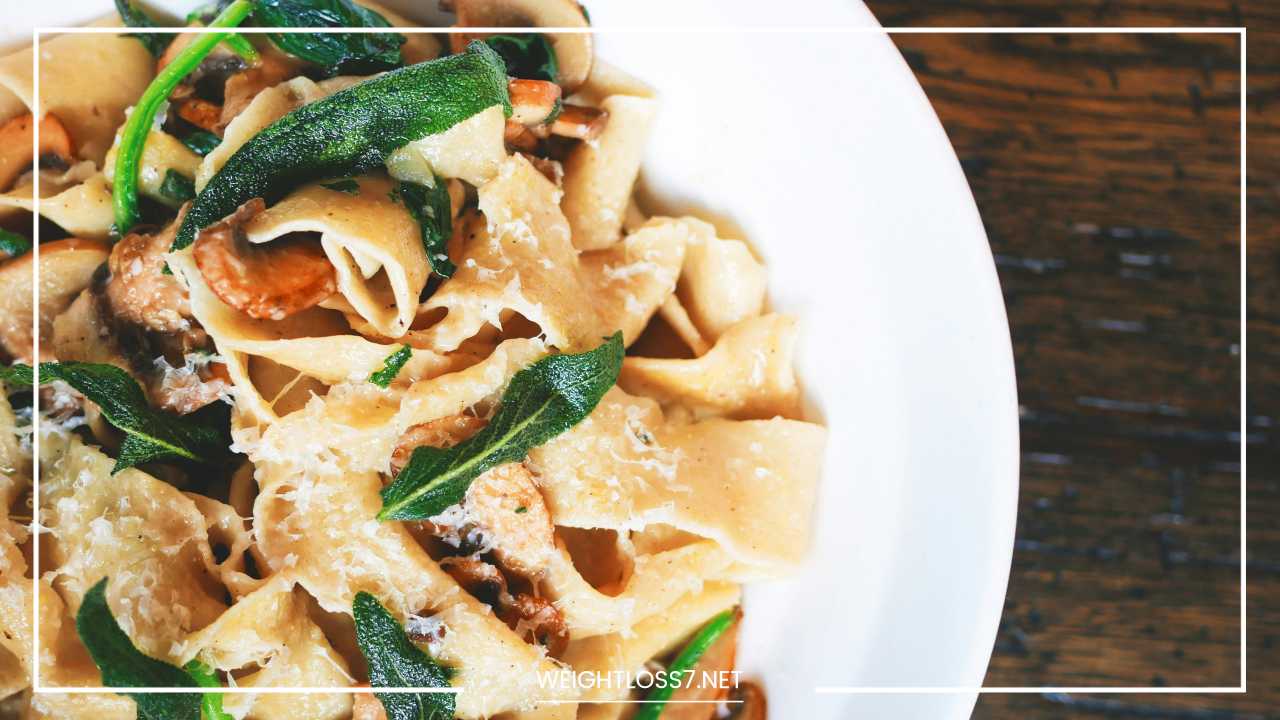Personalized Healthy Food Plan: Fuel Your Body & Thrive

Healthy Food Plan
Fueling Your Body: A Comprehensive Guide to Creating a Personalized Healthy Food Plan
We all know the age-old adage: “You are what you eat.” It’s not just a cliche; it’s a fundamental truth. The food we choose has a profound impact on our physical and mental well-being, influencing everything from our energy levels and mood to our risk of chronic diseases.
But with so much conflicting information and the constant hustle of daily life, crafting a healthy food plan that’s both nutritious and sustainable can feel like a daunting task.
This comprehensive guide aims to change that. Here, we’ll delve deeper into the world of healthy eating, equipping you with the knowledge and tools to create a personalized plan that nourishes your body and fits seamlessly into your lifestyle.
Understanding the Building Blocks: A Journey Through Your Dietary Needs
Before diving headfirst into meal ideas and recipes, it’s crucial to take a step back and understand your individual needs. This self-assessment will be the foundation for building a plan that truly serves you.
- Dietary Restrictions: Do you have allergies, intolerances, or follow a specific diet (vegetarian, vegan, gluten-free, etc.)? Identifying these restrictions is essential to avoid unwanted reactions and ensure your plan aligns with your dietary choices.
- Health Goals: Are you looking to lose weight, manage a specific health condition (e.g., diabetes, heart disease), improve athletic performance, or simply boost your overall well-being? Knowing your goals will help you tailor your food choices to achieve them.
- Activity Level: How active are you on a daily basis? Whether you’re a weekend warrior or have a desk job, your activity level directly impacts your calorie needs. A highly active individual will require more calories than someone with a sedentary lifestyle.
- Lifestyle: Consider your cooking skills, budget, and time constraints. Are you a culinary enthusiast who enjoys spending time in the kitchen? Or do you need quick, easy meals that fit a busy schedule? Understanding your time availability and preferences will help you choose realistic meal options.
The Power Plate: A Framework for Balanced Nutrition
Now that you have a clearer picture of your individual needs, let’s explore the cornerstone of healthy eating: the balanced plate.
This concept encourages the inclusion of various food groups, ensuring you receive a diverse range of essential nutrients. Here’s a closer look at the key players on your plate:
- Fruits and Vegetables (Aim for 5+ servings daily): These vibrant powerhouses are packed with vitamins, minerals, fiber, and antioxidants, all crucial for optimal health. Strive for a rainbow of colors on your plate to ensure you’re getting a wide variety of these beneficial compounds. Think leafy greens, berries, citrus fruits, and colorful vegetables like bell peppers, sweet potatoes, and carrots.
- Whole Grains (Aim for 3-5 servings daily): Swap refined grains like white bread and pasta for their whole-grain counterparts. Whole grains are rich in fiber, complex carbohydrates, and B vitamins, providing sustained energy and promoting digestive health. Options include brown rice, quinoa, oats, whole-wheat bread, and barley.
- Lean Protein (Aim for 1-2 servings daily): Protein is the building block of life, playing a vital role in muscle building and repair, cell function, and enzyme production. Incorporate lean protein sources like grilled chicken, fish (especially salmon and tuna for their omega-3 fatty acids), beans, lentils, tofu, eggs, and nuts into your meals.
- Healthy Fats (Include daily): Don’t be afraid of healthy fats! They are essential for hormone regulation, brain function, and nutrient absorption. Choose healthy fats from sources like avocados, fatty fish, olive oil, nuts, seeds, and nut butter.
Beyond the Plate: Essential Elements for a Successful Plan
While the balanced plate provides the foundation for healthy eating, it’s not the only piece of the puzzle. Here are some additional elements that contribute to a successful food plan:
- Meal Planning and Grocery Shopping: Planning your meals and snacks in advance is a game-changer. Dedicate some time each week to create a plan based on your dietary needs and preferences. This helps you stay organized, avoid unhealthy last-minute choices, and stick to your budget. When you hit the grocery store, arm yourself with your list and avoid impulse buys. Focus on purchasing whole foods and healthy ingredients to fuel your meals and snacks.
- Portion Control: Even the healthiest food can become unhealthy if consumed in excess. Practice mindful portion control to ensure you’re consuming the right amount of calories for your needs. Use smaller plates and bowls, and pay attention to recommended serving sizes.
Mindful Eating: Cultivating a Healthy Relationship with Food
Mindful eating goes beyond simply choosing healthy foods; it’s about cultivating a conscious and present relationship with your food. Here’s how to incorporate mindfulness into your eating routine:
- Eat Slowly and Savor Each Bite: Put down your phone and any distractions while eating. Focus on the taste, texture, and aroma of your food. Chew thoroughly, allowing your body time to register fullness cues. This helps prevent overeating and promotes digestion.
- Tune into Hunger and Fullness Cues: Learn to recognize your body’s natural hunger and fullness signals. Don’t force yourself to finish everything on your plate if you’re feeling satisfied. Equally important, don’t let yourself get overly hungry before reaching for food, as this can lead to overeating.
- Manage Stress: Stress can wreak havoc on your eating habits. Identify healthy stress-management techniques like exercise, meditation, or deep breathing. This will help you avoid emotional eating and make conscious choices about your food.
Building Your Healthy Plate: Sample Meal Plans and Recipe Inspiration
Now that you’re armed with the knowledge of building blocks and essential elements, let’s translate theory into practice. Here are some sample meal plans and recipe ideas to get you started:
Sample Healthy Meal Plan (1800 Calories):
- Breakfast: Greek yogurt with berries, granola, and a drizzle of honey (300 calories)
- Mid-Morning Snack: Apple slices with almond butter (200 calories)
- Lunch: Grilled chicken salad with mixed greens, quinoa, avocado, and a light vinaigrette (400 calories)
- Afternoon Snack: Carrot sticks with hummus (200 calories)
- Dinner: Salmon with roasted vegetables and brown rice (500 calories)
Recipe Inspiration:
- Spiced Chickpea Buddha Bowl: A vibrant and protein-packed vegetarian option. Combine cooked chickpeas with roasted vegetables like broccoli, sweet potatoes, and bell peppers. Drizzle with a simple tahini dressing and top with chopped fresh herbs.
- Quinoa Black Bean Burgers: A delicious and healthy take on classic burgers. Mash cooked quinoa and black beans with spices like cumin and chili powder. Form into patties and pan-fry or bake until golden brown. Serve on whole-wheat buns with your favorite toppings.
- Lentil Soup with Whole-Wheat Bread: A hearty and comforting soup perfect for cooler weather. Simmer lentils with vegetables like carrots, celery, and onions in a flavorful broth. Serve with a slice of whole-wheat bread for dipping.
- One-Pan Roasted Salmon with Vegetables: A fuss-free and flavorful dinner option. Toss salmon fillets and assorted vegetables like asparagus, Brussels sprouts, and cherry tomatoes with olive oil and herbs. Roast on a baking sheet until the salmon is cooked through and the vegetables are tender.
Remember, these are just samples! Feel free to customize your meal plans with your favorite healthy ingredients and recipes. Explore different cuisines, experiment with flavors, and find what works best for you.
Keeping it Simple and Sustainable: Strategies for Long-Term Success
The key to a successful healthy food plan lies in finding an approach that fits seamlessly into your lifestyle. Here are some practical strategies to ensure long-term success:
- Cook at Home More Often: This allows you to control ingredients and portion sizes. Even simple dishes prepared at home can be healthier than restaurant meals or processed foods.
- Prep in Advance: Dedicate some time on the weekend to wash and chop vegetables, cook a large batch of protein, or pre-portion snacks. This will save you precious time during busy weekdays and prevent unhealthy last-minute choices.
- Embrace Leftovers: Repurpose leftovers for lunch or dinner the next day. Get creative – leftover grilled chicken can be transformed into a salad, sandwich filling, or stir-fry addition.
- Find Healthy Alternatives: Satisfy cravings with healthy options. Swap sugary snacks for fruits, yogurt parfaits, or homemade trail mix. Bake sweet potato fries instead of regular fries. There are endless possibilities for healthy alternatives!
- Make it Enjoyable: Involve family and friends in meal planning and preparation. Explore new restaurants that offer healthy cuisine. Experiment with different spices and herbs to add flavor to your meals. Eating healthy shouldn’t be a chore – it can be a delicious and enjoyable journey!
Building Flexibility: Accommodating Social Events and Travel
Life isn’t always routine, and social events and travel can disrupt your healthy eating plan. Here’s how to navigate these situations without feeling deprived or off track:
- Plan Ahead: If you know you have a social event coming up, plan your meals beforehand. Focus on healthy choices in the days leading up to it. This allows you some wiggle room to indulge a bit without going overboard.
- Make Informed Choices: When dining out, scan the menu for healthier options. Look for dishes with grilled or baked protein, whole grains, and plenty of vegetables. Don’t be afraid to ask for substitutions or modifications to suit your dietary needs.
- Focus on Quality Over Quantity: Enjoy a smaller portion of your favorite dish instead of depriving yourself completely. Savor the flavors and avoid mindlessly grazing at buffets.
- Mindful Portions at Home: Balance out any indulgences by practicing mindful portions at home in the following meals. This helps maintain an overall healthy approach.
- Travel Essentials: Pack healthy snacks like nuts, fruits, and granola bars for travel days. This will help you avoid unhealthy airport food or convenience store options. Research healthy restaurants or grocery stores at your destination beforehand to ensure access to nutritious choices.
Beyond Food: Lifestyle Choices for Optimal Health
While a healthy food plan is a cornerstone of well-being, it’s not the only factor. Here are some additional lifestyle choices that contribute to optimal health:
- Hydration: Water is essential for every bodily function. Aim to drink plenty of water throughout the day to stay hydrated and support overall health.
- Regular Exercise: Physical activity is crucial for maintaining a healthy weight, building muscle, and boosting energy levels. Find activities you enjoy, whether it’s brisk walking, dancing, swimming, or team sports.
- Quality Sleep: Aim for 7-8 hours of quality sleep each night. Sleep deprivation can disrupt hormones that regulate appetite and metabolism, leading to unhealthy food choices.
- Stress Management: Chronic stress can negatively impact your physical and mental health, including your eating habits. Practice stress-management techniques like yoga, meditation, or deep breathing to keep stress levels in check.
Remember: It’s a Journey, Not a Destination
Creating a sustainable healthy food plan is a journey, not a destination. There will be bumps along the road, occasional indulgences, and days when you might not hit your goals perfectly. The key is to be kind to yourself, learn from setbacks, and recommit to your healthy choices.
Embrace the Process: Focus on progress, not perfection. Celebrate your achievements, no matter how small. As you build healthy habits and make informed choices about your food, you’ll be well on your way to fueling your body for optimal health and well-being.

















